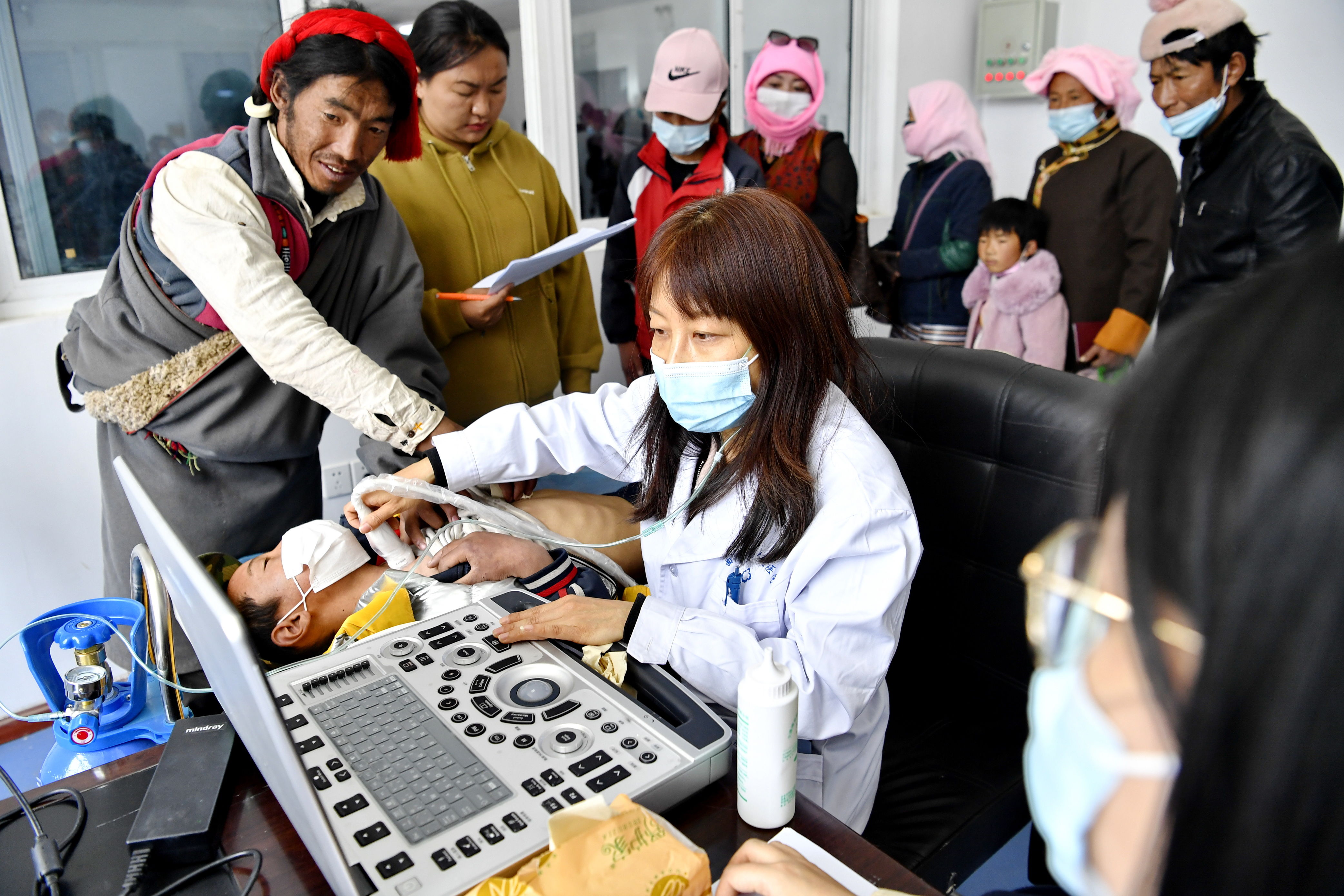The thrilling scene of the life-saving battle more than 4 months ago has made Wang Shouyi unforgettable to this day.
At the beginning of this year, the Shannan Maternal and Child Health Hospital in Tibet received Qu Zhen, a pregnant woman who was only 29 weeks pregnant. After a preliminary examination, it was found that she was a placental abruption, and the situation is very critical.
With the joint efforts of the obstetrics and gynecology experts from Hubei and local medical staff, Qu Zhen finally succeeded in giving birth to a baby boy. However, the baby weighed only 1.2 kilograms and was born without crying, without breathing, with a weak heartbeat and extremely unstable vital signs.
“The situation is urgent. After informing and obtaining the consent of the family, we immediately sent the newborn to the intensive care unit, and gave emergency treatment such as cardiopulmonary resuscitation, ventilator-assisted ventilation, and pulmonary surfactant application.” Hubei Wang Shouyi, a doctor who aided Tibet and director of the Pediatrics Department of Shannan Maternal and Child Health Hospital, recalled.
After 47 days and nights of professional diagnosis and treatment and meticulous care, the newborn gradually passed the dangerous period, and the indicators gradually returned to normal, and the weight increased to 2.2 kg.

Hubei Obstetrics and Gynecology experts and medical staff from Shannan Maternal and Child Health Hospital are treating the baby. Photo courtesy of the interviewee
Now that the child’s review of all the examination indicators has reached the standard, Qu Zhen’s hanging heart finally let go. “Thanks to the doctors who helped Tibet, the baby’s physique is much better now. Thank them for giving me a chance to be a mother.” Qu Zhen said with tears in her eyes.
This case of treatment of premature infants has set a new record for the successful treatment of low birth weight infants in Shannan Maternal and Child Health Hospital. Such records have been continuously refreshed in the snowy plateau…
Peace in Tibet Since liberation more than 70 years ago, the state has invested a lot of money and issued special policies to support the development of health care in Tibet, and the lives and health of the Tibetan people have been effectively guaranteed.
In 2015, the Central Committee of the Communist Party of China initiated the implementation of “group-type” medical personnel assistance to Tibet, which changed the short-term scattered pattern of medical assistance to Tibet in the past. 65 hospitals in 7 provinces and cities in Tibet, as well as hospitals directly under the National Health and Health Commission, selected thousands of key doctors to help 8 hospitals including the People’s Hospital of the Tibet Autonomous Region all become “tertiary hospitals”, realizing the transformation from quantitative to qualitative changes. leap.
In the past 7 years, 7 batches of more than 1,300 “group-style” medical professionals from all over the motherland have been sent to Tibet one after another, and they have written touching stories of life-saving and healing on the snowy plateau with benevolence and benevolence. .

Taizhou-aided doctors from Jiangsu Taizhou People’s Hospital performed work for a child in Dangxiong County People’s Hospital of Lhasa Inspection of. Photo by Xinhua News Agency reporter Li Jian
Wang Wei, a doctor from Beijing Chaoyang Hospital who supported Lhasa People’s Hospital, led a team to successfully remove a 9-year-old girl Aji’s huge retroperitoneal tumor. The poor households in the North Pastoral District were exempted from the high cost of transferring treatment outside the hospital area, and realized “serious illness treatment without hiding”.
Huo Zhiping, a doctor from the CNPC Medical Team in Tibet, performed a cesarean section on the dying Qu De in Shuanghu County, Nagqu City, with an average altitude of more than 5,000 meters. , moving stories are widely circulated in the northern Tibetan plateau.
By the end of 2021, Tibet has realized that more than 400 kinds of “serious diseases” can be treated without leaving the autonomous region, more than 2,400 kinds of “moderate diseases” can be treated without leaving cities, and common diseases can be treated without leaving the counties and districts. Life expectancy rose to 72.19 years from 68.2 years in 2015.
The ‘group-style’ aid of medical talents in Tibet has brought unprecedented benefits to people of all ethnic groups in Tibet. Experts in Tibet have brought advanced technology and management concepts, which not only filled many of the local medical fields in Tibet It leaves a group of local medical talents who can’t be taken away but can be retained,” said Gesang Yuzhen, director of the Tibet Autonomous Region Health Commission.
The “group-style” aid of medical talents in Tibet also adopts the model of “team leads the team, experts lead the backbone, and masters lead the apprentices”. Talents, and constantly make up for the shortcomings of Tibet’s medical care, so that people on the plateau can enjoy better medical resources.
“I can learn a lot from the Beijing-aided doctors in Tibet. My first master Gong Xiaofeng taught me to perform minimally invasive orthopaedic surgery, which is very practical in clinical practice.” Lhasa City People’s Hospital Orthopaedic Doctor Luo Songqun Today, Pei said, he is proficient in using minimally invasive techniques.
Fan Wei, a “post-90s” aided doctor in Tibet, is the attending physician of the Department of Traumatology and Orthopaedics in Xi’an Honghui Hospital. Nearly a year after entering Tibet, he has performed more than 200 operations of various types with his apprentices, and he has also imparted the medical treatment techniques and concepts he has mastered to local doctors without reservation.
“At present, with the help of aid to Tibet, Tibet has precisely trained more than 2,400 medical backbones at different levels, enabling a large number of local doctors to grow faster and become the backbone of each hospital. ‘Group-style’ medical care Aid to Tibet has created a new situation in plateau medical care.” Gesang Yuzhen said.
Reporter: Wang Zehao, Li Jian
Editor: Leng Yanyan